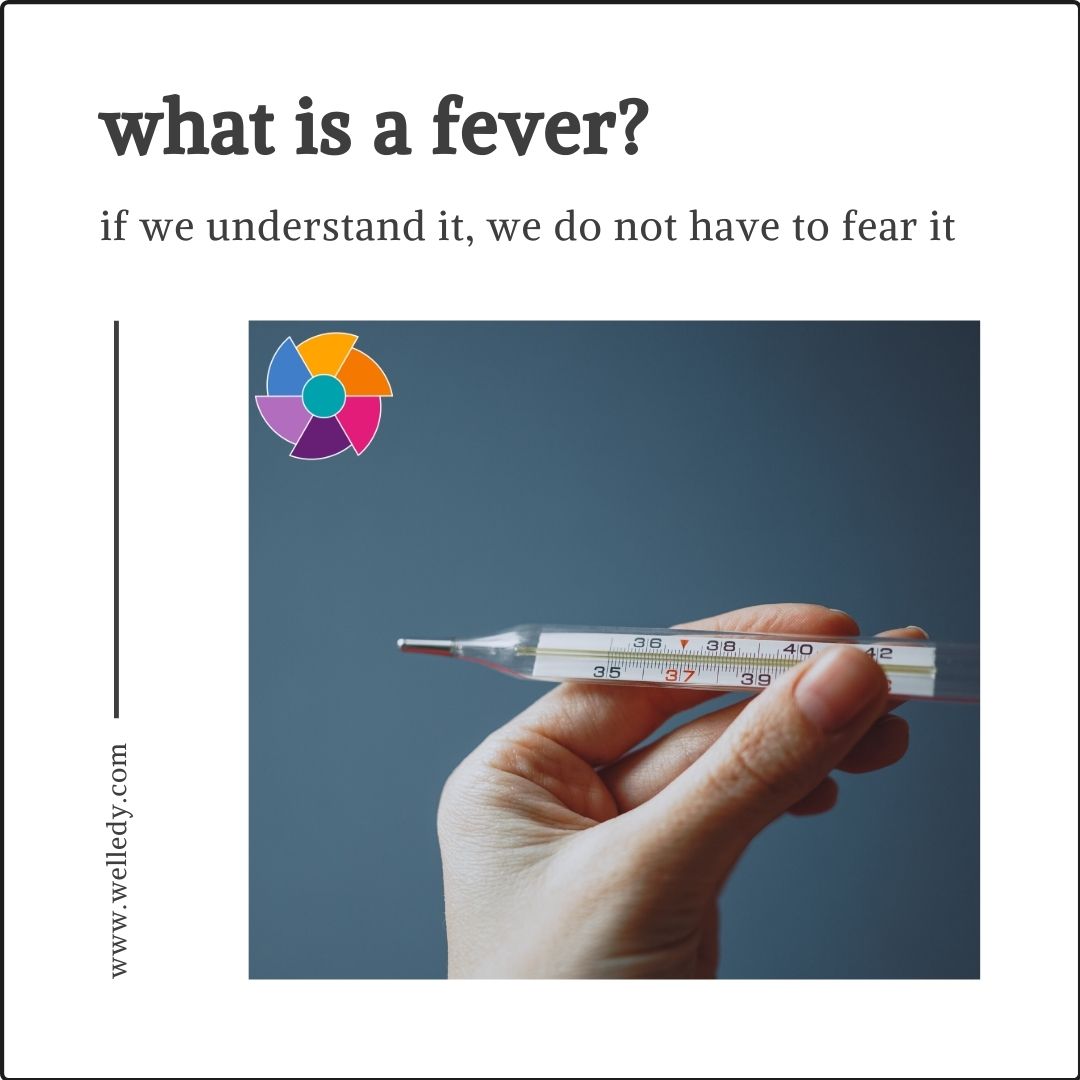What is a fever?
The word alone brings panic and anxiety to most parents! How do we dispel fear? Through understanding. Let’s try to understand what a fever is, why the body produces them and how to help someone through them. With knowledge comes confidence and discernment, which, in parenting are vital.
A fever is a temporary increase of the body’s core temperature, triggered by a virus, bacteria, fungi, medication or toxin. Acute diseases that are accompanied by fever are usually self-limiting. If a fever accompanies a simple cold virus, it is a symptom of the illness. Most fevers are of short duration, are benign, and my actually protect the individual experiencing it.
Fevers are fundamental in healing! This is how the body rids itself of unwanted toxins/pathogens. Fevers help to develop natural immunity and strength. It stimulates the increase in white blood cell production and therefore fight infection. Tehy help one recover quickly from an acute condition.
With a fever, one can experience other symptoms like: sweating, chills, headache, body aches, loss of appetite, irritability, dehydration, weakness, hot skin, dizziness, eye pain, vomiting, diarrhea.
The way to diagnose a fever is with a simple thermometer. Normal body temperature is 37 degress celsius.
When to see a doctor: typically, fevers are not a cause for concern, however, if there is discomfort with the high temperature for days or the fever is accompanied by more serious symptoms, see your doctor. If a child is less than three months old and is acting unlike their usual self, has a lack of coordination, is non-responsive, is not drinking fluids, see your doctor. If there is a history of febrile seizures, see your doctor. If there is a history or a current diagnosis of another disease, or the child is on medication, please seek the advice of a healthcare provider.
The typical course of treatment for fevers include over the counter anti-pyretics, and non steroidal anti inflammatory medications. Do use caution with medications and always consult the advice of a pharmacist.
There are natural solutions and ways to comfort someone that you can implement, during a fever. Give these options a chance and see how it goes!
Comfortable and loose fitting clothing, made of natural materials. Fevers can be uncomfortable! The natural fabrics of clothing made from linen and cotton are more breathable and allow one to be comfortable while they rest and heal.
Lukewarm water baths: not cold baths! A cold bath will increase the internal body temperature in an effort to protect vital organs, which may be harmful during a fever. Cool sponge baths and damp washcloths on a forehead and back of the neck will assist with comfort and in bringing down a fever.
Hydration: fevers cause dehydration and therefore the BEST way to combat a fever is to drink plenty of water!! Ice chips and popsicles are also helpful. Stay away from dehydrating drinks like caffeine and alcohol; they will not help a fever resolve. In terms of food, if the individual who is suffering from a fever has an appetite, they should eat hydrating foods like soups. If there is no appetite, don’t worry, as long as water is being consumed and the individual is remaining hydrated, they can skip a meal or two.
Sweat stimulating teas: Yarrow, Elder flower and ginger tea have heat stimulating properties and stimulate the opening of pores and sweating to enhance the progression of a fever.
Soak your socks: soak a thin pair of cotton socks in water, wring them out, and slip them on just before going to bed. Put a pair of dry wool socks over the wet ones. This easy at home treatment helps ease a fever by drawing blood to the feet, which dramatically increases blood circulation.
Apple Cider Vinegar: vinegar is thought to “draw out” a fever. Soak a couple washcloths in diluted apple cider vinegar and place them on the forehead, neck, abdomen, or add a cup to a luke-warm bath.
Homeopathic Medicine: a natural, safe and effective solution to many every day issues. Look out for the symptoms that are being presented to choose the right medicine.
Aconite – best for the early stages of a fever where there was a sudden onset, especially due to exposure to cold air or the wind. Restlessness and irritability are marked. Skin is hot and dry.
Metal Album – burning pain, person wants to be covered. Anxiety, fear and restlessness are obvious. Thirsty for sips of water. Feels weak.
Belladonna – sudden and intense onset of symptoms. Flushed face, high fever. Pupils may be dilated and the face is flushed.
Bryonia– the patient is very irritable, they want to lay perfectly still as they feel worse with the smallest movement. There is tremendous thirst and drink a lot of water. Usually pale and quiet.
Chamomilla– Fever often accompanies teething and the child is very irritable. One cheek may be flushed while the other is pale.
Ferrum-phos: slow onset of symptoms, red cheeks, throbbing head, better with cold wash cloth applied to the head.
Gelsemium – Dull, drowsy, dopey.. Chills and body aches. Patient does not want to move, heavy limbs, droopy eyes, chills up and down back, no thirst.
Phosphorus: chills and night sweats. Thirsty for cold drinks and may be hungry despite fever.
These natural methods have been tried and tested over hundreds of years with excellent success. Reach for one of these solutions the next time your child produces a fever!
- Fever , Nature heals , Natural lifestyle , Healthy , Heal naturally , Natural solutions , Fever solutions , Healthy body , Mind body spirit , Wellness , Health and wellness , Wellness mamma

